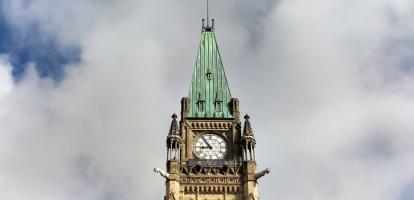November 18, 2021
Automatic GST Cuts Should Be In Ottawa’s Tool Box To Fight Downturns
- The federal government should consider automatic cuts to the goods and services tax (GST) in downturns as a complementary fiscal policy measure states the report.
- Authors Robin Boadway and Thorsten Koeppl propose an automatic mechanism that would use temporary cuts in the GST to deliver timely, targeted and fiscally anchored stimulus for aggregate demand during economic downturns and recoveries.
- The proposed Demand Stabilization Mechanism (DSM) would use a simple rule. When the economy’s negative output gap (the difference between actual and potential GDP) is forecast to reach 2 percent or more sustained for four consecutive quarters, a temporary GST cut would automatically kick in to stimulate demand for goods and services. The cut would initially remain in effect for four quarters, after which it could be extended depending on the state of the economy. Once the economy is on the recovery, the GST would resume at a higher level than before the cut to recoup lost revenues for the government over a set time period, thus providing a fiscal anchor.








